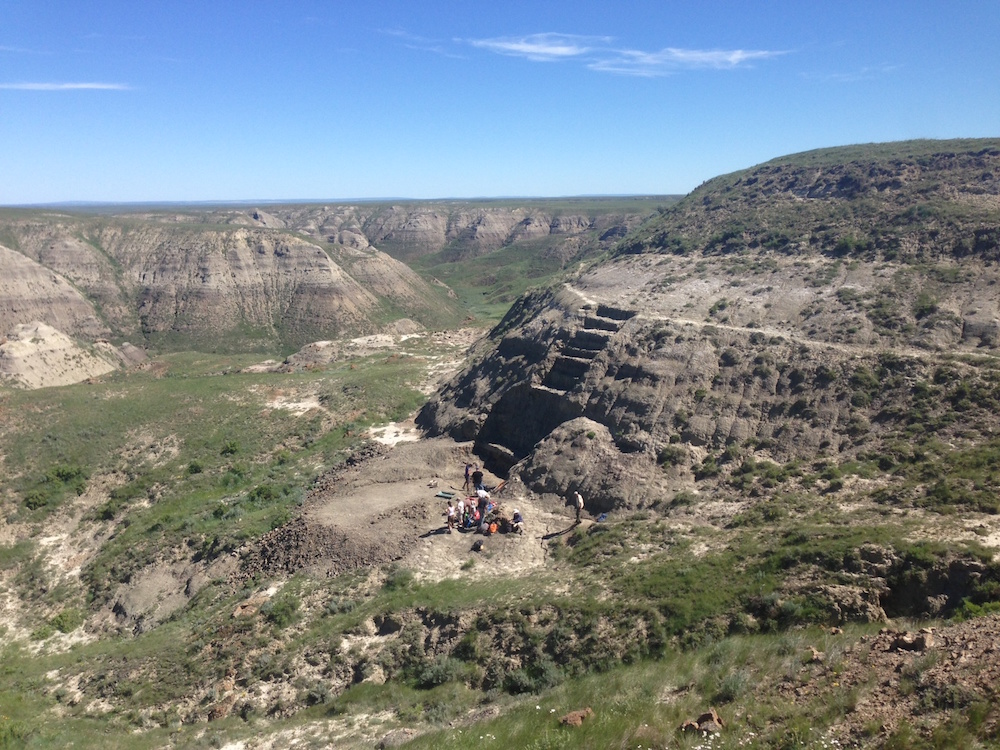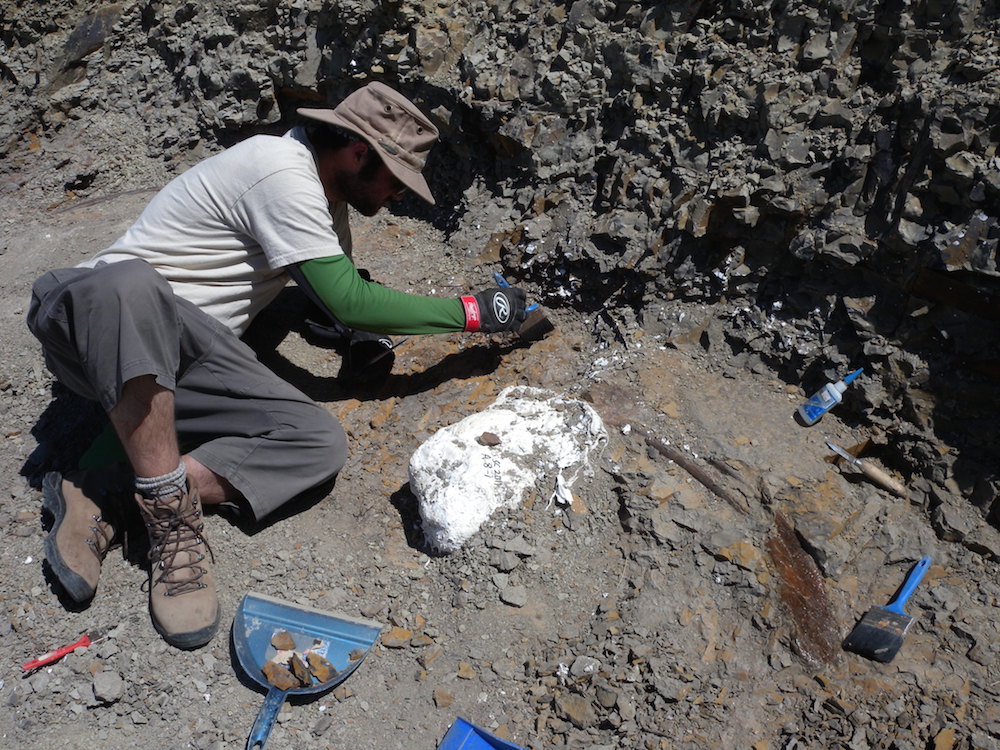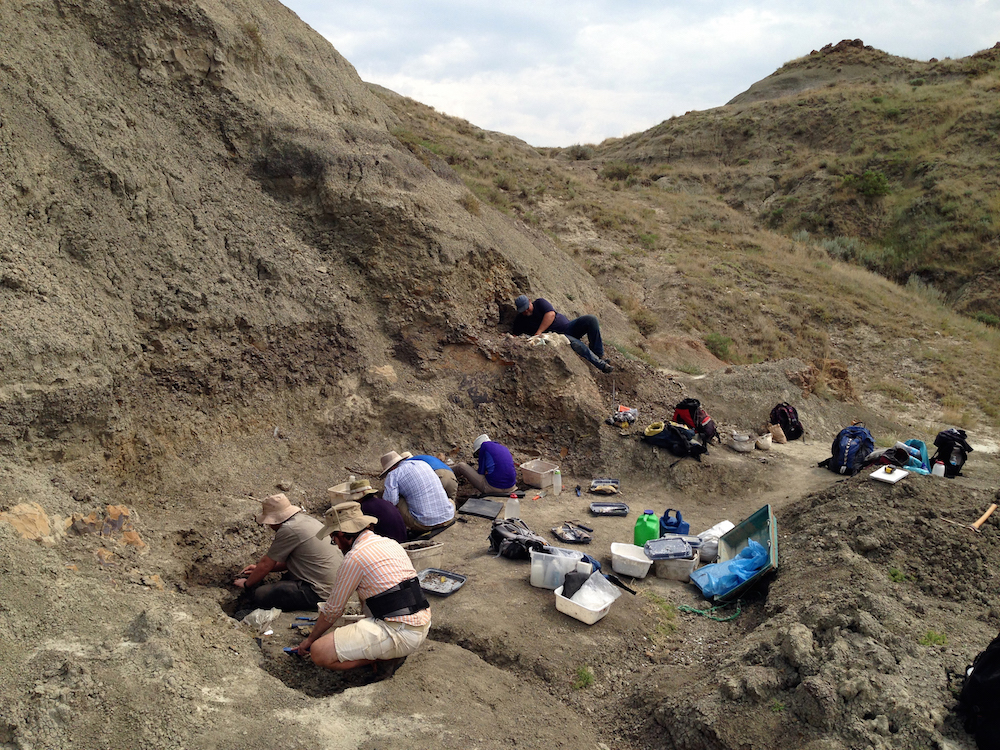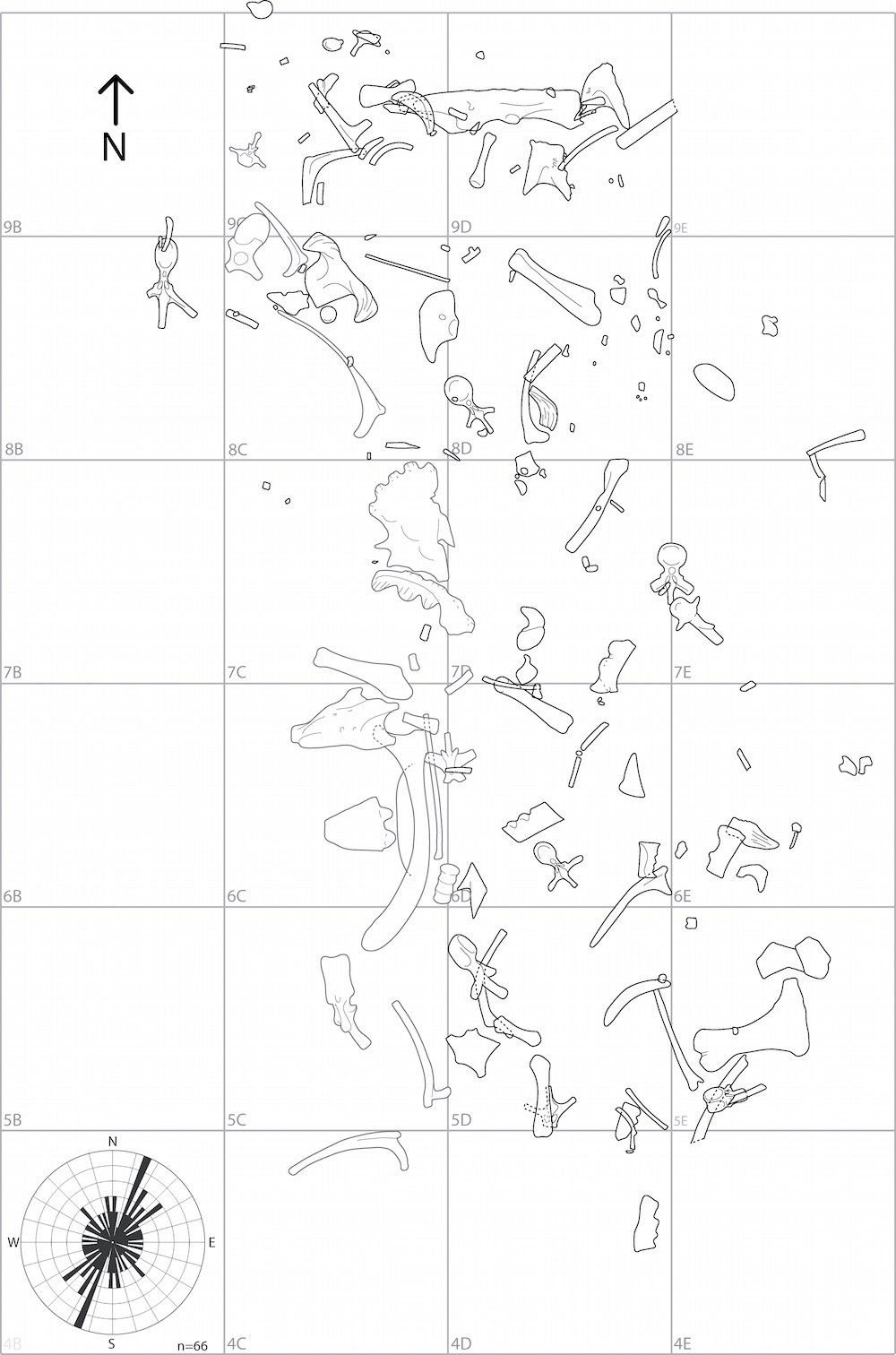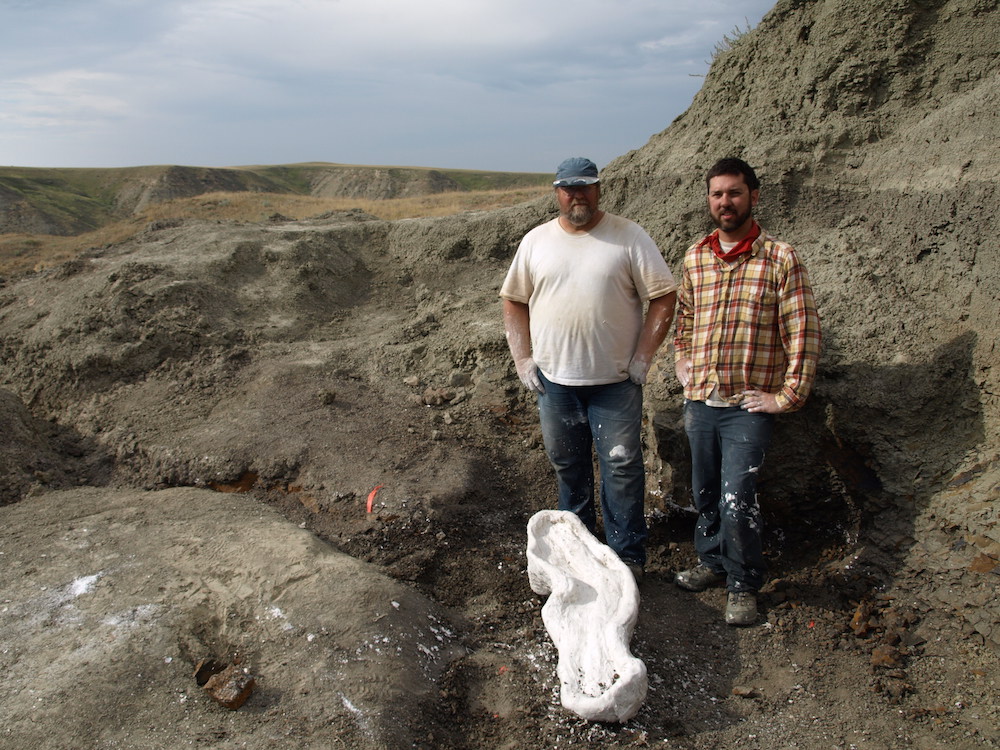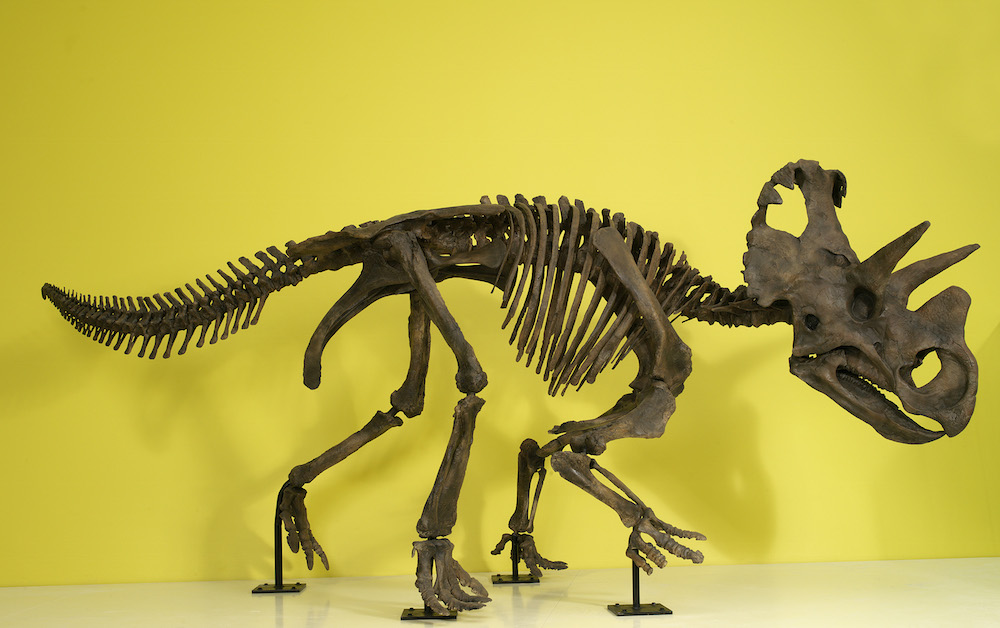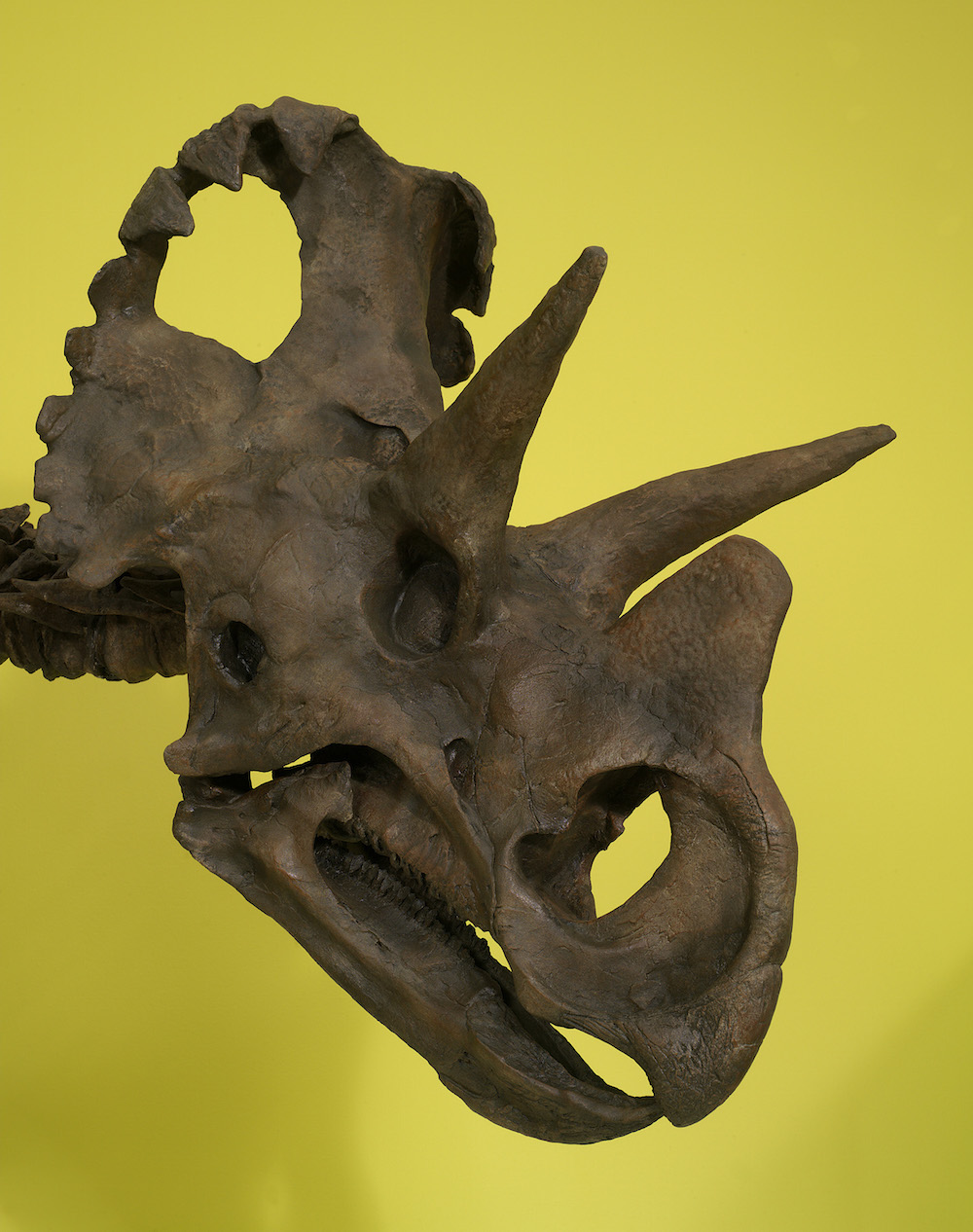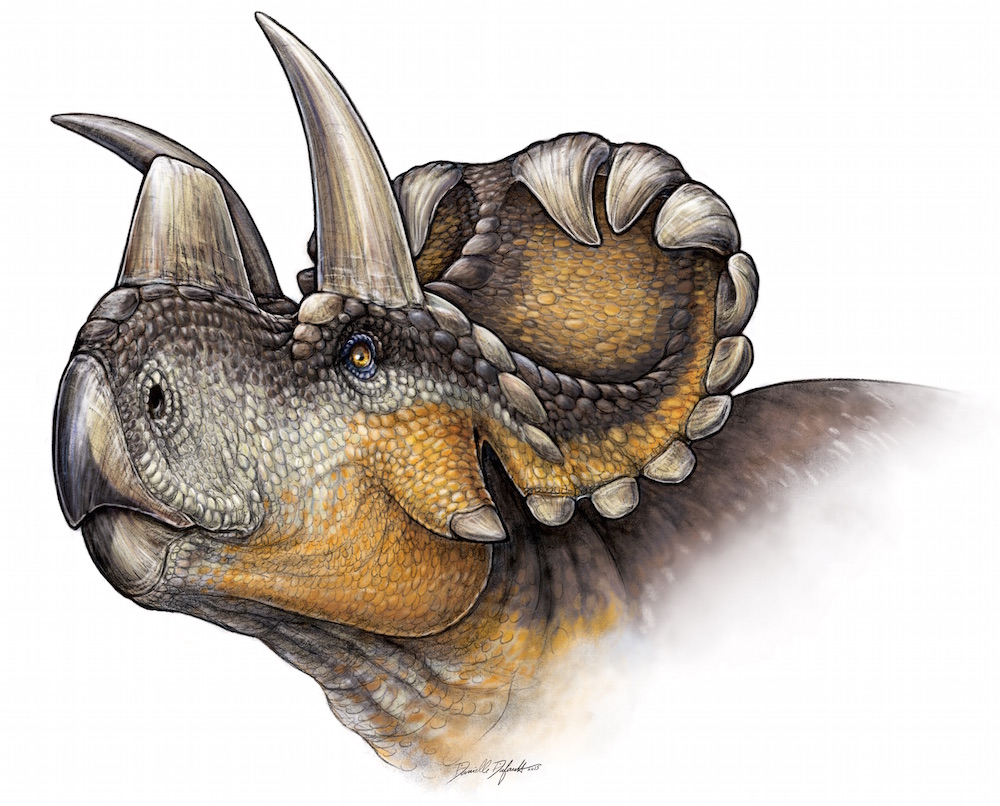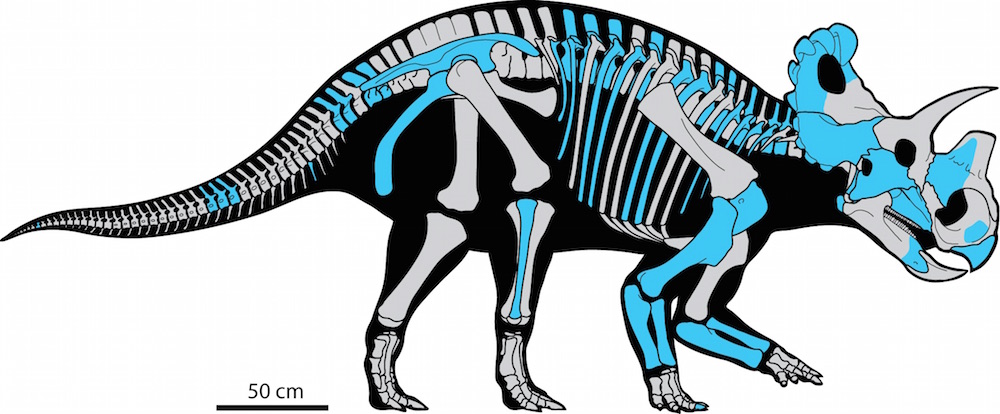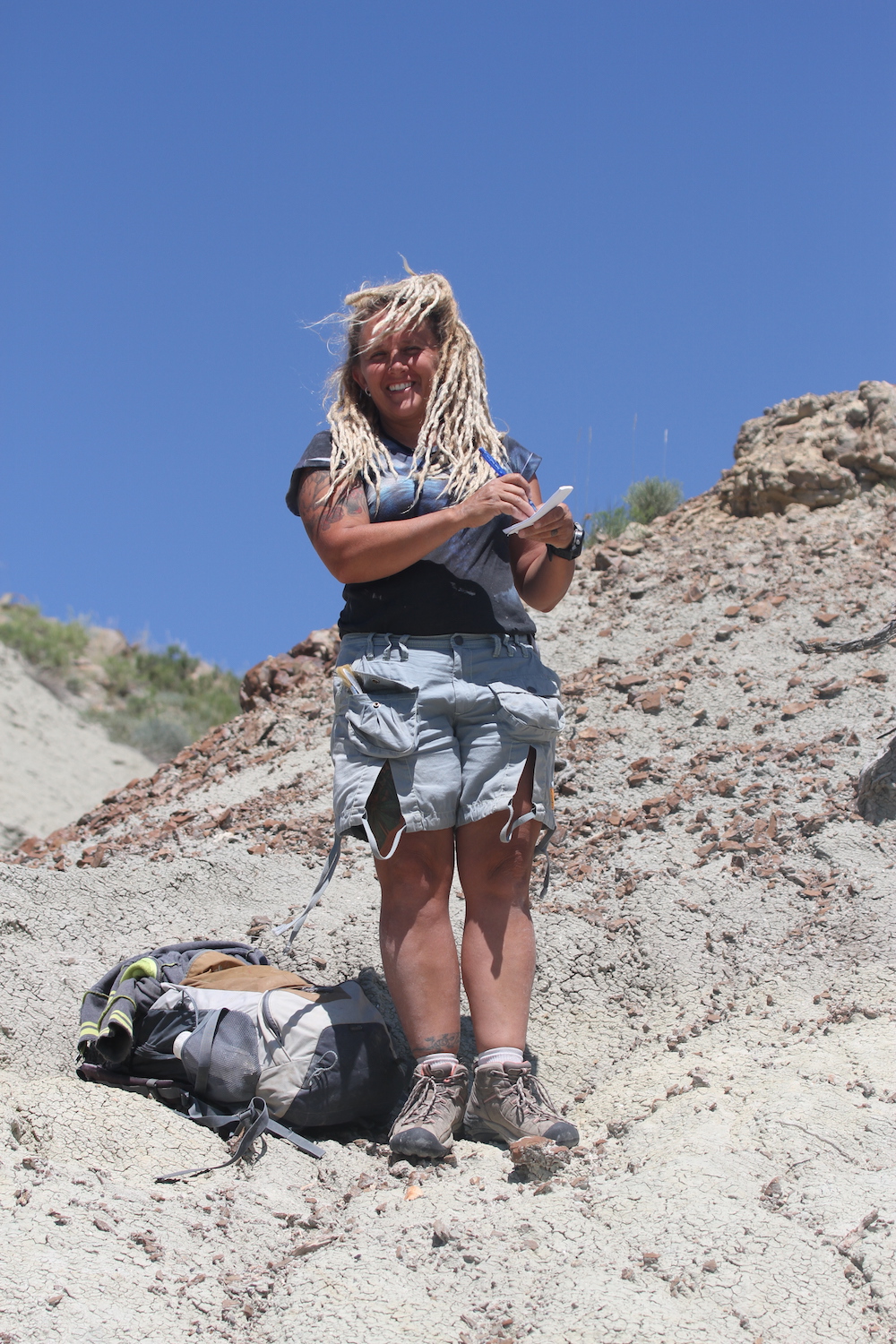Photos: New Triceratops Cousin Unearthed
A renowned fossil hunter in Alberta discovered the new species Wendiceratops pinhornensis, a dinosaur that lived about 13 million years before its famous relative, Triceratops, during the Late Cretaceous period. Researchers are interested in W. pinhornensis' tall nose horn, which likely sat upright, and is the oldest known tall nose horn among the large ceratopsian dinosaurs. [Read the full story on Wendiceratops]
Location of the find
This bone-bed quarry is where the Wendiceratops was uncovered during 2014 summer excavations. (Credit: David Evans.)
Hard at work
In the bone-bed quarry, a student digs up bones. (Credit: David Evans.)
Slowly but surely
Methodically, a field crew excavates the Wendiceratops bone bed. (Credit: David Evans.)
Get the world’s most fascinating discoveries delivered straight to your inbox.
Mapping it out
A map of the Wendiceratops bone-bed quarry shows the locations of the excavated bones. (Credit: David Evans.)
Experts on the subject
Michael Ryan (left) and David Evans (right) co-authored the paper describing Wendiceratops. (Credit: Derek Larson.)
Taking a look back
At the Royal Ontario Museum in Toronto, a reconstruction of Wendiceratops’ skeleton is on display. (Credit: Brian Boyle.)
Piecing it together
Close-up of a reconstruction of Wendiceratops' skeleton. (Credit: Brian Boyle.)
Imagining a life
An artists' conception of Wendiceratops. (Credit: Danielle Dufault.)
A picture of progress
This reconstruction of the Wendiceratops skeleton shows the discovered bones in blue. (Credit: Danielle Dufault.)
An adventurer
Wendy Sloboda discovered the site where the bones of the new dinosaur were recovered. (Credit: Michael Ryan.)

Laura is the archaeology and Life's Little Mysteries editor at Live Science. She also reports on general science, including paleontology. Her work has appeared in The New York Times, Scholastic, Popular Science and Spectrum, a site on autism research. She has won multiple awards from the Society of Professional Journalists and the Washington Newspaper Publishers Association for her reporting at a weekly newspaper near Seattle. Laura holds a bachelor's degree in English literature and psychology from Washington University in St. Louis and a master's degree in science writing from NYU.
